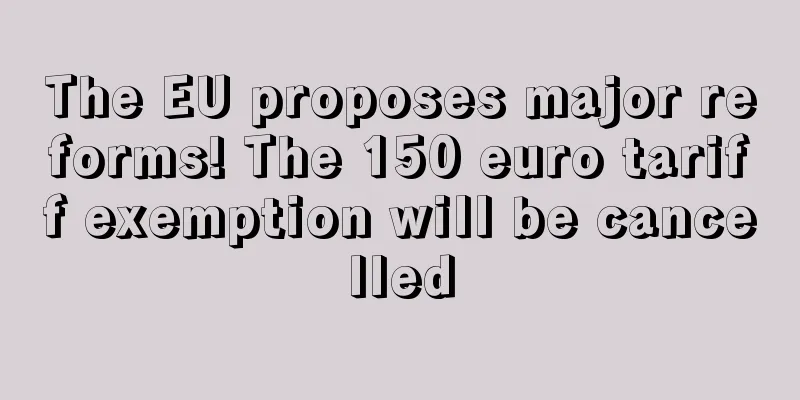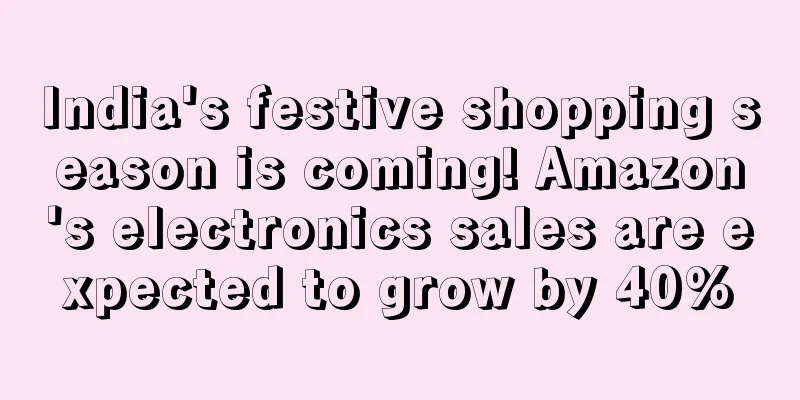The EU proposes major reforms! The 150 euro tariff exemption will be cancelled

|
North America and Europe have always been the key markets for domestic cross-border e-commerce to go overseas. In contrast, selling in the US market is simple and crude; Europe has many compliance requirements such as product certification, and sellers have to think more about operations. After the full collection of value-added tax, the profits of European sites have dropped significantly, and some sellers have lost interest and simply lay down, or consider shifting their focus to the US market.
Even so, the strong consumption power of the European market is still a must-fight place for many sellers, but new challenges are coming. Last week, the European Union released a tariff reform proposal, one of the key actions is to reform the e-commerce field, including the cancellation of tariff exemption for goods worth less than 150 euros . For sellers, this is tantamount to a thunderbolt, and they are scratching their heads again: should they continue to do business in the European market? What should they do next?
The EU releases tariff reform proposals, which may cause an industry earthquake
On May 17, the European Commission put forward the most ambitious and comprehensive reform proposal for the EU Customs Union since its establishment in 1968.
The reform is primarily a response to the operational pressures currently facing EU customs, including a significant increase in trade volumes (especially in the e-commerce sector), a rapid increase in the number of EU standards that must be checked at the border, and changing geopolitical factors.
The EU will set up a new customs administration to oversee the EU Customs Data Center, which is the heart of the new system. Over time, the data center will replace the existing customs IT infrastructure of EU member states, saving them up to €2 billion in operating costs each year .
This EU customs reform has three major pillars, and the one most relevant to cross-border sellers is the e-commerce reform.
The EU said the reform will make online platforms a key player in ensuring that goods sold into the EU comply with all customs obligations, unlike the current customs system, which places the responsibility on individual consumers and carriers. Platforms will then be responsible for ensuring that duties and VAT are paid at the time of purchase , and consumers will no longer be subject to hidden fees when the package arrives. With online platforms as official importers , EU consumers can rest assured that all duties have been paid and that the purchase is safe and in compliance with EU standards.
Another key point is that the reform removes the current threshold of exemption from customs duties for goods with a value of less than 150 euros. The EU believes: "This is seriously exploited by fraudsters. Currently, up to 65% of such parcels entering the EU are undervalued to avoid customs duties upon import."
The reform also simplifies the calculation of customs duties for low-value goods purchased from outside the EU, reducing the possible thousands of tariff categories to just four , making it easier to calculate customs duties for small packages, helping platforms and customs authorities better manage the 1 billion e-commerce purchases entering the EU each year and eliminating the possibility of fraud. The new e-commerce system is expected to bring in €1 billion in additional customs revenue each year.
Tax-free threshold disappears, making European e-commerce sales more difficult
The European market has always had relatively high standards for cross-border e-commerce sales. When the profits were considerable, it was just a little more effort, and sellers could easily accept it, but as the profits were cut, the motivation of sellers began to disappear.
Starting from July 2021, 27 EU countries/regions began to implement new VAT regulations, and platforms such as Amazon will collect and pay VAT on their behalf. The standard VAT rate in the UK is 20%, and the standard rates in Germany, France, Italy and Spain are 19%, 20%, 22% and 21% respectively. One seller did the math and found that his original weekly profit was 500,000, but it shrunk to 300,000 after the platform paid VAT on his behalf.
In order to maintain profits, sellers have to raise prices to cover taxes, but the reality is that raising prices will quickly lead to a loss of orders and a drop in rankings. In the end, most sellers can only bear it and pay taxes from their own pockets. Profits have changed, and paying VAT has become a watershed for many European sellers.
Amazon operators do not prefer the European site because of the cumbersome operation. Although recruitment has been tightened, sellers still find it difficult to find suitable candidates when recruiting European site operators. Sellers do not care about operators, and the European site is in an awkward situation. However, it has become a paradise for some keen sellers because of this.
"Big sellers don't look down on me, small sellers can't do it, so I can do it just right." said a seller.
The industry believes that the European market is the ceiling for precision marketing. "European marketing is really good. Most categories have small market capacity, no traffic monopoly, low CPC, and 30 clicks for 10 euros." Seller "Yun Feiyang AMZ" sighed, "The market is fragmented, and there are five countries and five markets, so there are always unexpected gains. Although the profit may seem thin, the traffic cost is low, the promotion cycle is short, the exchange rate is high, and the FBA fee is cheap. In the end, the return is more than that of the US site."
But now, the EU reform proposal has brought new challenges. The cancellation of tariff exemptions for goods below 150 euros, the need for online platforms to demonstrate that goods sold to the EU meet all safety standards and regulations, and the transformation of platforms into importers to collect tariffs mean that after the proposal is passed, sellers will face higher tax costs, stricter product sales standards, and increased operating pressure.
Two other moves in customs reform
In addition to the big moves in e-commerce, the EU customs reform has two other focuses, namely, one-stop collection of cargo information of importing companies, member states will share real-time data, and enable smarter customs inspection methods.
The proposed new system will give customs authorities a bird's eye view of the supply chain and production processes of goods entering the EU. All Member States will have access to real-time data and will be able to pool information to respond to risks quickly and consistently. The new system will significantly improve cooperation between customs and market surveillance and enforcement agencies at EU and national level, including information sharing through the Customs Data Hub.
In the reformed EU customs union, businesses that want to bring goods into the EU can record all information about their products and supply chains into a single online environment - the new EU Customs Data Center. When submitting customs information, companies only need to interact with one portal and submit data only once for multiple shipments.
According to the proposal, the hub will be open to e-commerce goods in 2028, followed by other importers in 2032 on a voluntary basis. A review in 2035 will assess whether this possibility can be extended to all traders when the hub becomes mandatory from 2038 onwards.
(Reform timeline)
A speck of dust in the era is like a mountain on a person's head. Tariff adjustments will inevitably affect cross-border business, not to mention this is called " the most ambitious reform proposal of the EU Customs Union since its establishment in 1968. "
According to the legislative process, the proposal will be submitted to the European Parliament and the European Council for comments. If the proposal is passed, it will inevitably have a significant impact on cross-border e-commerce business in the European market. Sellers who focus on the European market should be mentally prepared to cope with possible major changes. European Union tariff |
<<: Effective in June! A US state may ban Temu
>>: The wind has changed! 41% of Amazon sellers place ads outside the site
Recommend
What is lindakale? lindakale Review, Features
Founded in 2014, lindakale is an online mall focus...
What is Ellie? Ellie Review, Features
Ellie , a monthly subscription box for activewear...
What is Simply Framed? Simply Framed Review, Features
Simply Framed is a company that specializes in cus...
Toy sales up 23%, Spain's Christmas season starts optimistically
According to data from the NPD Group , in the fir...
ChatGPT banned accounts on a large scale, sellers: trial cards expired!
From sellers to logistics companies, from writing...
IPO date set! Made.com valued at £775m
Foreign media reported that the British Made.com ...
Amazon delivery workers get another pay raise
Amazon plans to raise wages for its contract driv...
Massive layoffs! Youkeshu has more than 500 employees supporting 10,000 stores
Not long ago, Youkeshu's parent company Tianz...
2022 Australian Online Shopping Report: Demand for multiple categories surges
Recently, Australia Post released the " Aust...
Store closures are getting faster and faster! Only 34% of Shopify merchants can survive for a year
According to an analysis by The Globe and Mail, o...
It has been ranked top five in the category in three months, and Shenzhen sellers have sold 1 billion in half a year!
It has been ranked top five in the category in th...
What is RECO? RECO Review, Features
RECO is the official incubation service provider o...
Amazon Inspire is now open for testing in the US, and sellers can also play with it like this!
It is understood that Amazon has been testing the...
The wind has changed! 41% of Amazon sellers place ads outside the site
Recently, e-commerce data statistics agency Jungl...
What is Chengshang New Vision? Chengshang New Vision Review, Features
Chengshang New Vision is a professional foreign tr...









